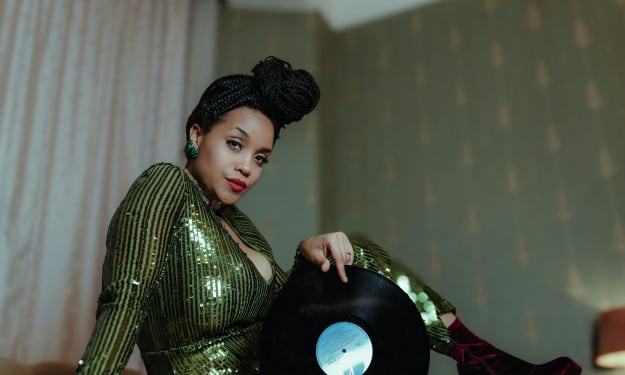Are You Afraid of the Dark?
Horror Analysis

There is just something about horror films that keep us coming back for more. Whether it's the sense of danger that boosts our adrenaline, knowing that we can watch the danger on our screen whilst knowing we are perfectly safe, or maybe it's the thrill of being scared that keeps drawing us back.
Whatever the reasons be, there is a reason horror movies are the most common, most popular, and most controversial genre out there — creating the most sequels, prequels, and remakes than any other genre. But many wonder how the genre is so successful, after all, aren't all horror movies the same?
Yes and no. True, many horror movies follow the same premises and storyline, with the same range of characters and more often than not, the same settings and locations. However, what makes each film different to the other is through its director. Authorship is what makes films stand out from others as they have a unique and noticeable theme or art scheme about them which is used to easily identify a director.
Authorship is most famously linked to directors such as Tim Burton and Wes Anderson, as they have an identifiable colour scheme or art style which is used to make their films more recognizable and easy to identify. Want to identify a Tim Burton film? Look for the dark and often gothic art style, the fantasy genre, the use of symmetry, and the often eccentric and quirky array of characters. Because of these tropes, it is easy to identify a Tim Burton movie.
But what examples of authorship are used in horror films? Well, plenty. Wes Craven, one of horror's most famous pioneers, has left a trail of iconic horror films through the last few decades behind him — creating stunning visual masterpieces such as A Nightmare on Elm Street (1985), The Last House on the Left (1972) and Scream (1997). Craven is known for his 70s, 80s, and 90s slasher films, which are often referred to as gore-fests due to their realistic gore scenes and horrifying chase sequences. It is also easy to identify a Stephen King classic, as directors adapt the horror classics to film in such eerie accuracy.
I bet by now you're wondering why I appear to be so fascinated with the horror genre, and the only thing I can tell you is that I love a good scare. I know many people are confused by my fascination with the genre, and no, I am no psychopath, nor am I a serial killer. I am merely a fan of all things horror. I love the feel of the hairs on my arms sticking up, I love being taken back by a jump scare, and I love rooting for a protagonist who is being pursued by a marked killer.
Although I am more a fan of supernatural and paranormal films, I am also a huge fan of early slasher films and of splatter punk. I have read many blogs and essays on the genre and have come to realize how broad the subject is, as it has so many different sub genres to it as there are so many elements that make up the horror genre. The hero, the supporting characters, the antagonist(s), the setting, the lighting, the sound, the soundtrack, the makeup, the costumes, the special effects, the editing, the props, and the camera angles all add up to make a stunning masterpiece when done right.
A good soundtrack can definitely set the atmosphere for a good horror film, however, when timed perfectly, as well as perfect camera angles. Shock cuts and jumps scares, however, are iconic to the genre, and with the right suspenseful music playing in the background, a dim or dark lighting, and a camera angle which exposes a possible jump scare, shock-cuts can really put you on the edge. A shock cut is used to suggest a sudden, violent eruption or disturbance, often used to draw the audience's attention away from a character and to something of importance to the narrative or something significant to that scene.
But it is not just the sudden appearance of a character that makes the jump scares so terrifying, but the music which accompanies it. As the suspense rises, so does the music, as it gets ever so louder, alerting the audience that this is made for suspense reasons and that something is about to happen. But whenever there's a jump scare, there is more often or not a fake jump scare before it, which also has the rise of suspenseful music, but when we expect a climax, there is nothing. When we are hit with a jump scare, there is often a sound that frightens you more than the jump scare itself. This is often a loud bang, a crack of lightning, a scream, or a gunshot.
Can you really blame me for finding so much to love about the genre? Even though horror films nowadays aren't as good as the classics (my opinion), filmmakers are finding more and more ways to creating chilling scenes and are finding even more ways to create a new breed of horror and revolutionize the genre. Regardless of what direction the genre is going in, I will always be fascinated with it, and will do my best to understand the genre and explore more ways in which directors and filmmakers create such stunning visual masterpieces.
Until then I will just continue with my research and watch even more films until I feel as if I know enough of the genre as humanly as possibly. I hope this article has given you an insight into the genre and into why so many people are passionate about it. Have a good day and happy scaring.






Comments (1)
Great work! Fantastic! 💜❤️💙